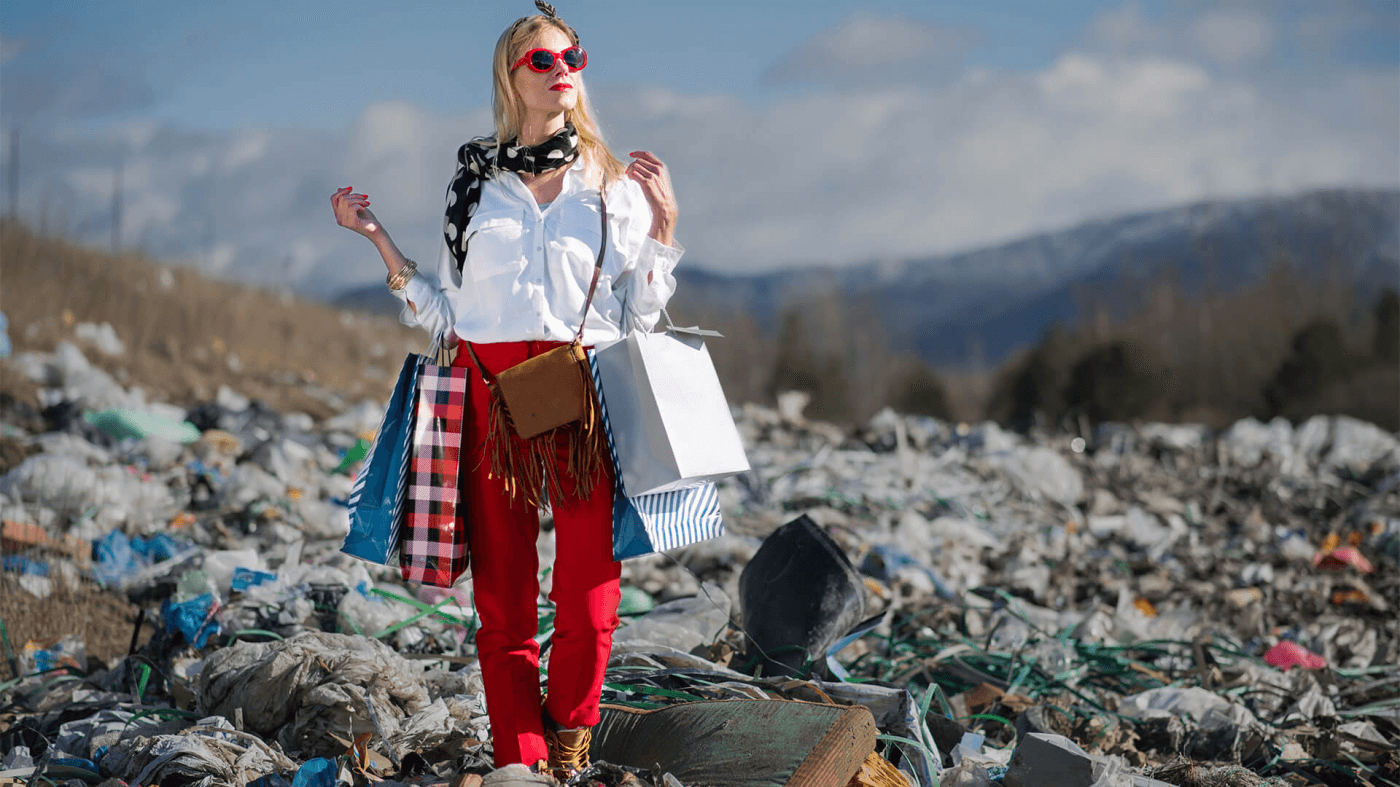History of Fast Fashion and How it Became a Problem
When did Fashion Become an Environmental Problem?
Every story has a beginning, and this is the history of Fast Fashion.
Humans began to wear clothes with the purpose of surviving the wintertime by staying warm.
Documentation suggests that the Neanderthals may have needed to cover up to 80 percent of their bodies to survive the harsh winters, and they did that by using fur cloaks.
Modern humans (hello Homo sapiens) started to wear clothes around 170,000 years ago, covering as much as 90 percent of their bodies during winter, probably developing more modern-looking clothing.
And it was not until 40,000 years ago that we began using needles and awls made out of bone and stone to create fitted clothes.
Fast forward to the Roman era (500 BC - 323 AD), where Romans and Egyptians developed an interest in their appearance and spent a lot of effort and currency on fashion because wearing certain styles meant you belonged to certain status and wealth.
In the western world, fashion has been important throughout history. European countries strongly influenced this, as the colonial rule brought their dressing styles to a global audience. During these times, royal courts dictated fashion. Clothes made of natural fiber and neutral colors were the costumes of the masses, while aristocratic people dressed stylishly. Clothes separated people into groups.
Up until the 1800s, most people relied on raising sheep to get wool and weave clothes.
As humans continued to learn, so did the technology and processes used. New knowledge always opens new doors, and for the fashion industry, this meant picking up speed during the Industrial Revolution , which introduced new textile machines, factories, and ready-made clothes in a range of sizes, rather than being made to order.
The sewing machine, patented in 1846 , contributed to an extremely rapid fall in the price of clothing and an enormous increase in manufacturing.
Garment factories increased, but a big amount of clothing production was still done in small workshops throughout the beginning of the 20th century, and in some cases, outsourced to people who worked from home for very low wages, which provided a glimpse of what eventually became the basis of most modern clothing production, unfortunately.
World War II generated fabric restrictions and made the design of more functional styles necessary, which led to increased standardized clothing production. After that, middle-class consumers became more receptive to buying mass-produced clothing.
Fashion trends began moving quickly during the 1960s , as young people embraced cheaply made clothing to follow the latest fashions, opposing traditions of older generations. Fashion brands had to find ways to keep up with the increasing demand for affordable clothing, leading to massive textile mills opening across the world, which allowed the US and European companies to save millions of dollars by outsourcing their labor.
So, who became the first true “fast-fashion” retailer? It’s hard to know.
Technically, H&M is the longest-running of these retailers, opening in Sweden in 1947 and reaching the states in 2000.
Zara opened its first store in Spain in 1975 using the same principle that it follows today: make speed the driving force. When Zara came to the states at the beginning of 1990, the New York Times used the term “fast fashion” to describe the store’s mission, stating that it would only take 15 days for a garment to go from a designer’s idea to being sold on the racks.
This process has been referred to as a “democratization of fashion” enabled by mass production that allowed more people to express themselves through clothing regardless of their economic background.
However, it came with a high cost for the people and the planet: unfair and negligent labor practices that have created tragic events like The triangle Shirtwaist Fire in 1911 , the 2012 fire at the Tazreen Fashion factory in Bangladesh , and the Rana Plaza tragedy in 2013 , where over a thousand workers ended up dead.
The easy access to fashion made our value perception of the garments decrease significantly. Today, we consume more clothes than ever and use them less than ever, which has led to a dramatic amount of waste that ends up decomposing for decades or more, polluting the environment.
We are also exploding natural resources and generating carbon footprint at record speed just to use garments for a short period of time. It makes no sense because, as an indigenous proverb says, “We do not inherit the planet from our ancestors; we borrow it from our children”
Ok, then what can we do?
The first step is to understand the negative impact of clothes. Today, the fashion industry accounts for more carbon footprint than all international flights and maritime shipments combined and generate, in many cases, unfair payment and working conditions for the garment workers.
But we always are going to wear clothes, so we need to do it more consciously, which means that the overconsumption era and only buying new paradigms must change.
Using what we already have is a great way to contribute, so is reselling or donating what you no longer use, buying secondhand instead of new, and when you have no option of your preference in that market, consider looking for sustainable and ethical brands that are making efforts towards a better and healthier future for all.
We can do this together, and we can do it in style without sacrificing our planet and our people. All we need is to shift paradigms and be open to new and improved ideas.
The moment is now, and we are here to help.
Maria F. Burgos
Founder & CEO







Leave a comment